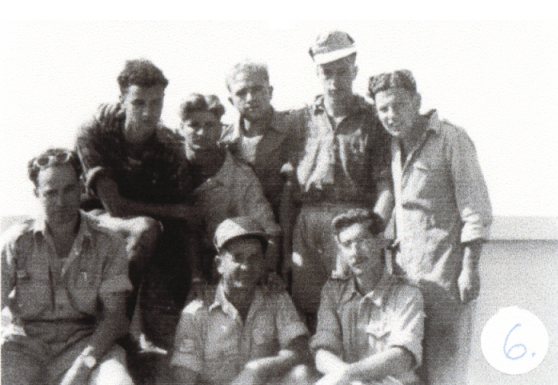by Zacharia Kafka
During the Finnish-Russian War of 1939-40, Jews fought alongside the Finns. When Viipuri was annexed to the Soviet Union, the Jews – about 300 persons – evacuated the city along with the Finns. During World War II (1941-44), Finland fought on the German side against the Soviet Union, but despite strong German pressure, the Finnish authorities, headed by Field Marshal Mannerheim, refused to enforce anti-Jewish legislation. (Note: 250 Finnish Jewish soldiers fought in World War II in 1939-44, and 24 of them lost their lives in battle.) 32 young Jews – 5 girls and 27 boys – came to Israel to fight in the War of Independence. 160 Jews, who did not possess Finnish nationality, found refuge in neutral Sweden. At one stage the Finns yielded, and allowed the Gestapo to deport 50 Jews who had arrived as refugees from Austria and the Baltic countries before the Nazi invasion. However, after the dispatch of the first transport of 11 Jews who were murdered at their destination, Marshal Mannerheim and the Finnish authorities refused to continue the operation. The peace treaty between the Allies and Finland prohibited racial discrimination and thereafter Jews again enjoyed full civil rights.
Recruiting
During 1947 some groundwork was prepared for recruiting volunteers from abroad to fight for Israel in the war that seemed inevitable. In Scandinavia camps were established to give volunteers “agricultural training,” which was in fact basic military training. One of the biggest camps was in Denmark, outside Copenhagen, and there were also training camps in Sweden. The Jewish community in Finland was aware of this activity and the youth movement in particular was in contact with the Scandinavian youth organizations, and co-cooperated with them.
In the winter of 1948, Mr. Moshe Finkel, a gymnastics and sports teacher and trainer from Israel arrived in Finland to recruit volunteers to fight in the War of Independence. Mrs. Dina Wert, who had been traveling to many countries asking for financial help, was with him. Her efforts in Finland were not in vain, and as a result, a complete field hospital for 100 patients, three ambulances, medicines and other supplies were sent from Finland to Israel. Mr. Hagai Ueberall and Mr. Shlomo Zabludowicz also came to Finland to buy weapons.
The Jewish community assembled on the premises of the Jewish school in Helsinki to listen to these speakers, as well as to Dr. Strascheffsky, who was by far the best speaker in the Jewish community at that time; they delivered convincing and inspiring addresses on the subject of volunteering for the future Israeli Army. All this took place in secrecy, as recruiting for a foreign army was against Finnish law.
As result of the above, and because of personal commitment, 32 young people, including five girls, enlisted. All of them had served in the Finnish Army, and most of them had taken part in the fighting in the World War II.
Towards The Promised Land
The volunteers traveled to Palestine both in groups and individually. The largest group, including the four girls, was sent to the Sjovik camp in Sweden, where they received “agricultural training,” together with other volunteers from the Scandinavian countries; their instructors were Assaf Komoranik and Chaim Gantz from the Haganah. After the training, which lasted several weeks, the group was transferred to a camp in Lago di Como in Italy for additional training, and from there to Genoa, where they boarded the “SS Argentina” for Haifa. They arrived in Haifa on 14th May 1948, one day before the British left.
One of the girls, Mirjam Hurvitsch, was left behind in Sweden to prepare bandaging materials for the army. At the beginning of July 1948 Mirjam flew from Sweden to Prague, and from there to Israel on an Israeli transport airplane carrying Czechoslovakian arms
Some traveled in small groups, others individually. Issi Baran flew from Helsinki via Prague to Israel, Boris Rubanovitsch travelled alone from Stockholm via Genoa to Haifa, and Shura Maimon, Ruben Fiedler and Shlomo Kafka travelled together from Stockholm via Rome and Naples to Haifa.
Two Jewish boys on their way to war – some personal memories:
Ruben Fiedler and Shlomo Kafka had come to Sweden a little later than the main group and had to wait almost a month before they were able to continue by train to Rome. In Stockholm the Jewish community rented a room for Kafka, while Fiedler stayed with his sister, who was living in Stockholm. They received money from the Jewish community for living expenses . To have some more spending money, Kafka worked in a restaurant as a dishwasher.
Finally, on their way by train to Rome, they were joined by two other volunteers whom they had met in Stockholm. Both were concentration camps survivors, one from Hungary, the other from Poland. The latter was immediately called Jimmy Durante for an obvious reason concerning the size of his nose. Both survivors had learned some Swedish while recuperating in Sweden, and with the help of Yiddish, the four were able to communicate with each other. As they arrived in Milan, they showed the address they had been given in Stockholm to a traffic officer, and were led to a tram that took them to the right address, the Milan Jewish Community premises, a huge complex. Here they were given 5,000 Italian lira and were advised to have dinner at a restaurant. The waiter recommended spaghetti, which they ordered. This was the first spaghetti for each of the boys, and they had no idea how to manage to get the long “worms” from plate to mouth. The waiter was very helpful and enjoyed showing them how to eat spaghetti with a fork and a spoon. Everything seemed to go well, but suddenly “Jimmy” lost his nerve, put his chin on the edge of the table and sucked the spaghetti from the plate. The Italians sitting in the restaurant thoroughly enjoyed this show put on by “crazy tourists.” Of course the Italians did not know that “Jimmy” had not been given spaghetti-eating lessons at the camps from which he survived.
The next day, the four were sent to Lido de Roma, where volunteers from different countries were gathering. After about two weeks, the volunteers traveled by train to Naples to board the “SS Caserta,” heading for Haifa. At the port of Naples they had to wait at the quay while the ship was loading. Suddenly, one of the cases labeled “spare parts for agricultural machinery” fell from the loading hook, and the “spare parts” – artillery ammunition – rolled all over the quay. The ammunition was picked up, and hurriedly repacked while the customs officers turned their backs and observed the skies.
The voyage to Haifa took four days The boys spent these days and nights on the deck, as the hold was too crowded After landing in Haifa, Fiedler and Kafka were sent to the army camp at Sarafand (Zrifin). What became of “Jimmy” and the Hungarian is not known.
In Israel
Most of the volunteers from Finland had served in the Finnish army and fought in the World War II, so they found the “basic training” at the training camps and in Israel unnecessary. In Israel, most of them had considerable difficulty with the Hebrew language, although they had studied Hebrew at school. However, all of them spoke and understood Yiddish and German as well as some English, and they managed to understand even the commands, which sounded very odd to their ears.
The pleasant surprise was the informality in the army and the navy, and the good relationship between the officers and their soldiers. While the soldiers in the Finnish army marched in organized columns to the dining room and to the shower, in Sarafand all were free to go and eat whenever they pleased, as long as it was during the time reserved for this, and to take a shower whenever they wanted to. During and after the World War II, Finland suffered every possible kind of shortage, and the Finnish volunteers were happy to find the food in the army tasty and plentiful; the army took good care of the volunteers. As Mary Davidkin, who was expecting her first child, was left without a place to live, her husband Wolf was summoned his commander’s office. The commander told Wolf that he’d learnt that Wolf’s wife was looking for living quarters, and ordered Wolf to take time off until suitable accommodation was found. When John Anker was wounded and in hospital, his commander visited him every week and brought him parcels and gifts. This human approach made a deep impression on the volunteers.
When on leave, the Finnish Machalniks frequented the Tel-Aviv cafes and bars. A couple of times, under the influence of considerable amounts of alcoholic beverages, they even caused some disturbances. This was taken with humor, forgiven and forgotten. The Finns, for their part, considered the Israeli soldiers “funny, ‘because “they eat falafel and drink soda water,” known as gazoz.
Some personal memories about Sarafand and anti-aircraft artillery:
After arriving in Haifa, Ruben Fiedler and Shlomo Kafka were sent to Sarafand (Zrifin). At the camp at Sarafand, they lived in a big tent with eight bunks, four on each side. During the day the “walls” of the tents were rolled up to let in some air. One night, as Fiedler and Kafka were talking to each other in Finnish, they were interrupted by a voice coming from one of the bunks: “Damned Finns!” The voice belonged to a former Soviet army sergeant, who had been in Finland after the war with the commission that had insisted that Finland comply with the regulations imposed on her by the ceasefire agreement. This Jewish sergeant had deserted the commission and fled to Sweden with help from “unidentified people,” and come from Sweden to Israel. He had already managed to marry and his wife was living in Haifa.
When the “training” was over, Fiedler and Kafka were sent to an anti-aircraft unit at Tel Nof airfield, where a group of Finnish Machalniks were manning a 20-mm anti-aircraft gun. There was no real action, and the only diversion was the nightly concert performed by jackals.
After two-three weeks of inactivity, the group and the gun were transferred to Tel-Aviv, where they were placed on the roof of the Power Station. The group consisted of the following men, all from Finland: Rafael Anker, Ruben Fiedler, Shlomo Kafka, Jakov Wardi, Moses Wardi and Maimon Shura, who joined the group later, but was forced to return to Finland after a short time, due to the death of his father.
Every day, except Shabbat, Sergeant Mittelman came to inspect them – it was important that all were properly shaved – and a young officer made test alarms from time-to-time. After a little while, Shlomo Kafka, who had served as a wireless operator in the Finnish artillery during World War II, asked to be transferred to a radio unit, a request that was granted, and the others took an N.C.O. course. Peretz Wardi was promoted to sergeant, the others to corporals. They were all appointed as squad leaders.
Author: Shlomo Zacharia Kafka, Karkur – Israel, September 2001
Finnish Machal – Photo Album
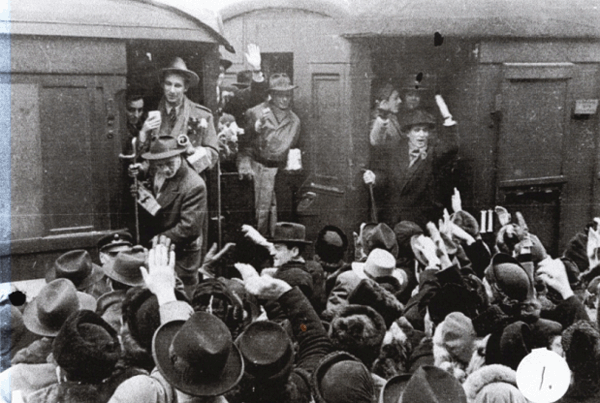
Members of the Jewish community bidding farewell to a group of Machalniks at the Helsinki railway station.
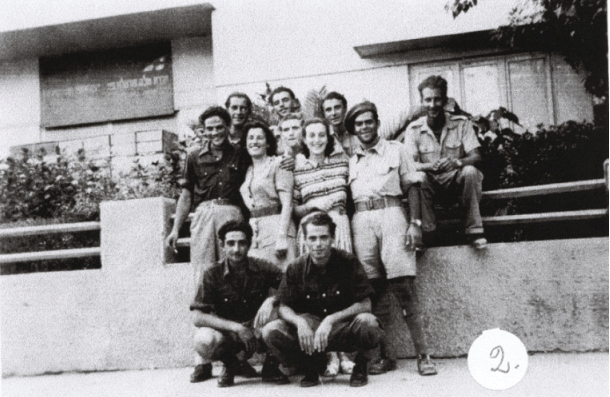
A group of Machalniks from Finland:
Front from left to right – Issi Jalowitsch and Berel Silberstein
Back from left to right – Jussi Kersch, Theo Salutskij, Bertha Keini, Peretz Wardi, Rafael Anker, Mary Davidkin, Harry Millner, Wolf Davidkin, Kaj Ancker
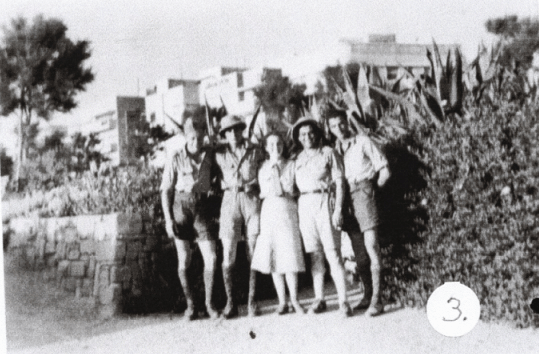
Left to right: Jussi Kersch, Harry Millner, Mary Davidkin, Wolf Davidkin, Peretz Wardi
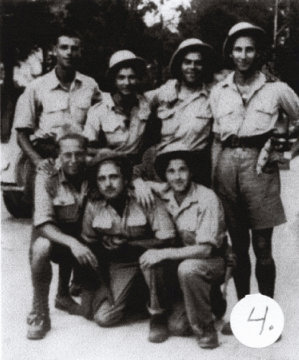
Front from left to right: Moses Wardi, Jakov Wardi, John Anker
Back from left to right: Peretz Wardi, Rafael Anker, Wolf Davidkin, Kaj Ancker
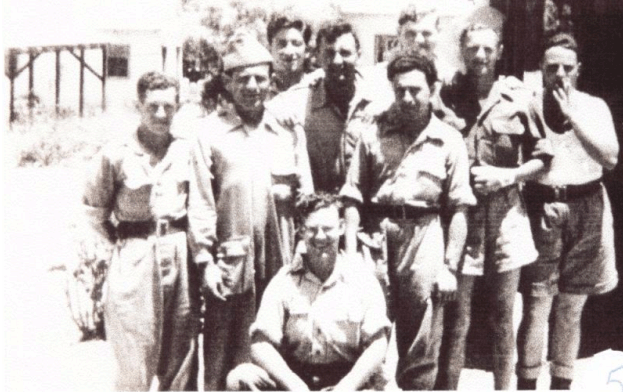
Scandinavian Machalniks with two Finnish volunteers – Marcus Rung and
Jussi Kersch
Anti-aircraft artillery group in Tel Aviv
Front from left to right: Shura Maimon, Israeli Sergeant Mittelman, Shlomo Kafka
Back from left to right: Peretz Wardi, Rafael Anker, Jakov Wardi, Moses Wardi, Ruben Fiedler.
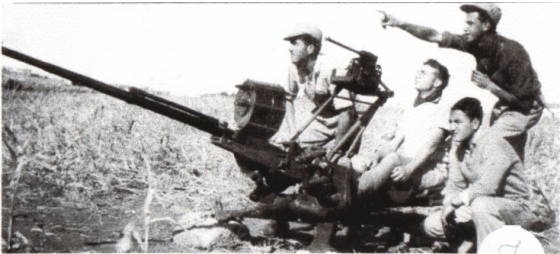
Members of the group shown in the previous photograph No. 6, “in action”
at the Tel Nof airfield.
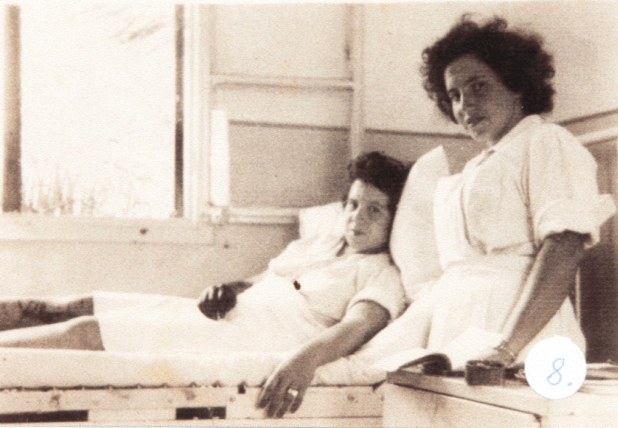
Nurse Mirjam Hurvitsch (Salm) sitting with a patient.
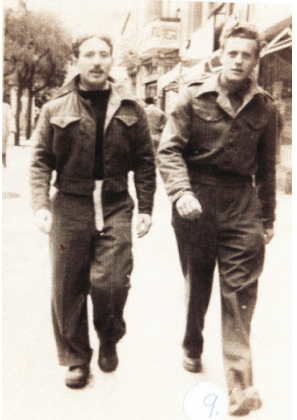
Jussi Kersch with Menachem Demzit, a volunteer friend from Denmark,
on leave in Tel Aviv.





